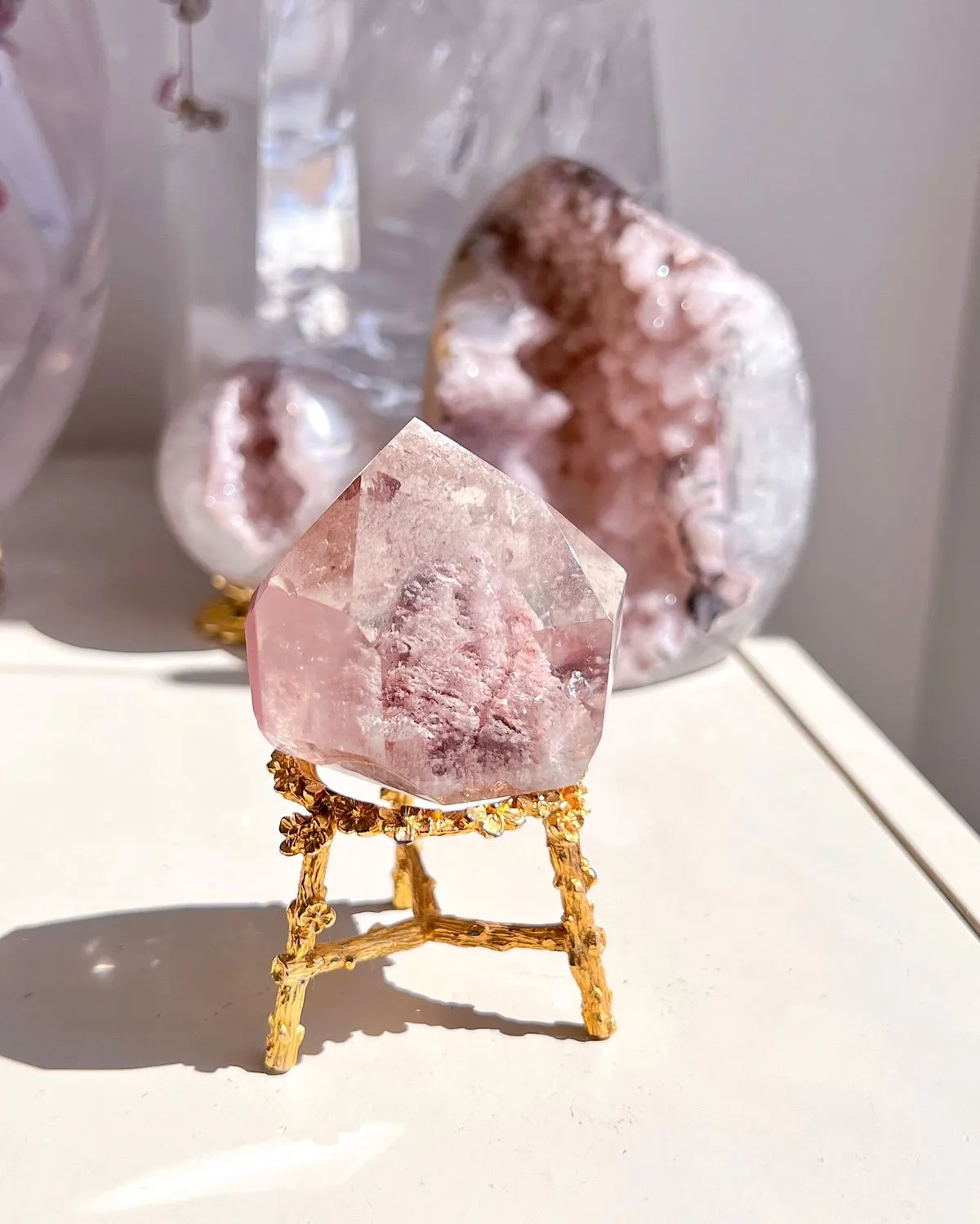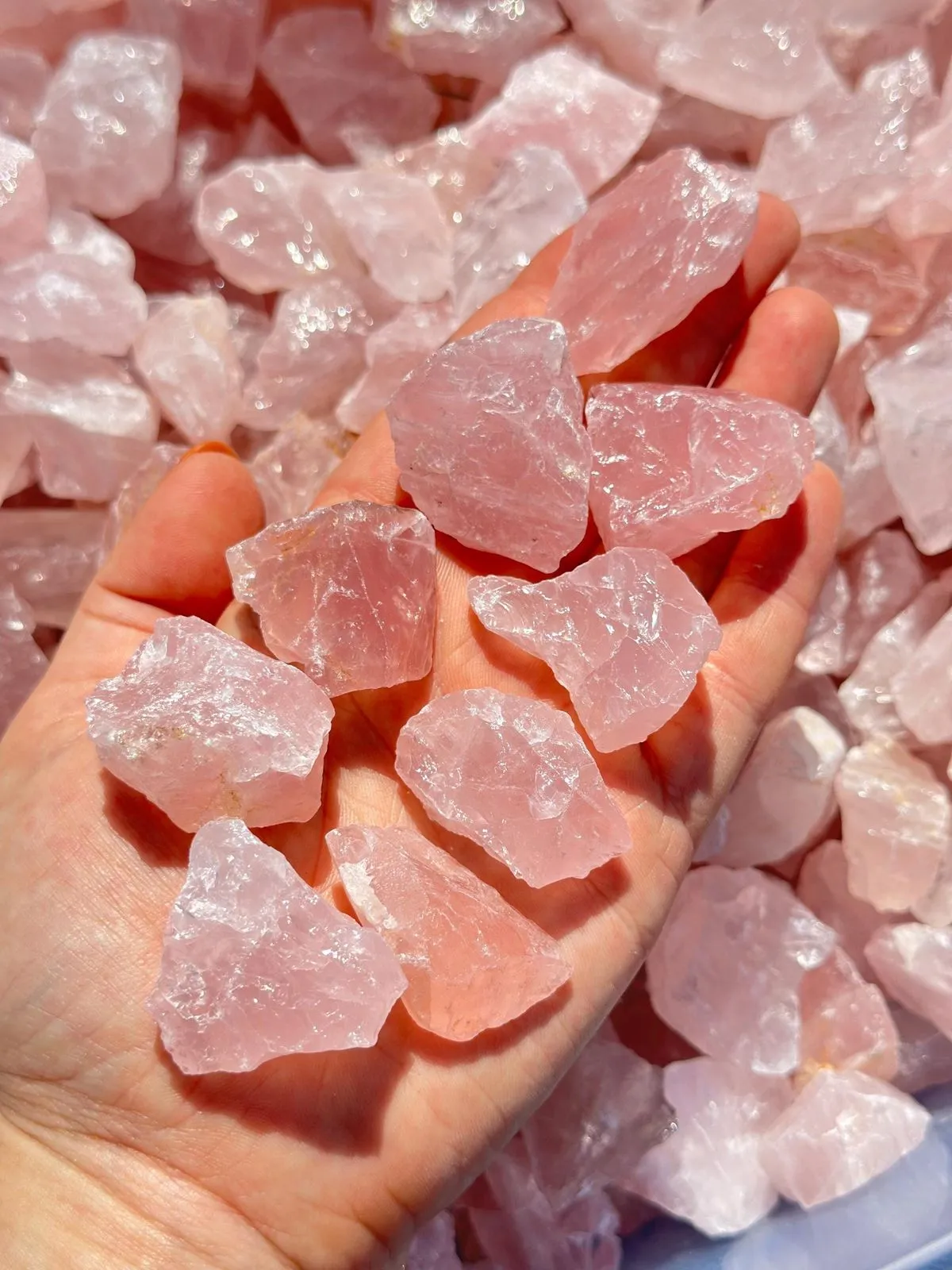Rose Quartz Historical Gentle Journey
Rose Quartz in History & Mythology: Ancient Beliefs About the Love Stone
Imagine holding something in your palm that's connected human hearts across five thousand years. That soft pink stone? It's traveled through Egyptian temples and Roman villas, tucked into marriage contracts and meditation chambers. Well, maybe not as a protagonist in grand tales—more like a quiet witness to humanity's deepest yearnings.
The thing is, we often carry emotional armor built from old hurts and daily disappointments. At some point though, that slight ache beneath your ribs whispers for something... well, gentler. Today we'll explore how this humble crystal became a universal symbol for tenderness's resilience across civilizations—and how its legacy might just resonate with that quiet ache within you.
This passage will be explored at:
- Origins in Ancient Mythology
- Cross-Cultural Love Stories
- Ritual Applications Through Time
- Perceived Emotional Resonance
- Care Methods Across Civilizations
- Enduring Symbolic Significance
- Myths Versus Geological Facts


Origins in Ancient Mythology
Picture this—a Grecian shoreline where ocean foam births a goddess. According to myths whispered since Homer's time, rose quartz emerged when Aphrodite rushed to save her wounded lover Adonis. Their mingled blood stained white quartz blossoms pink on the riverbanks. This origin story anchors the stone's identity as a testament to love's vulnerability.
Anyway, what's striking isn't just the narrative but how it reveals ancient understanding of emotional physics. That first-century storyteller knew intuitively what we're rediscovering—that gentle touch has transformative power. The stone became synonymous with reconciling passion and tenderness—less about fierce battles than bandaged wounds and whispered apologies at twilight.
Cross-Cultural Love Stories
Fast-forward to Mesopotamian workshops where artisans carved miniature worlds. Around 2500 BCE, they pressed rose quartz cylinder seals into marriage contract clay, embedding lovers' vows in something more permanent than words. Meanwhile in Rome, nobility slipped signet rings onto fingers—suppose a statesman sealing confidential letters with rose quartz insignias while dreaming of their hearth.
These weren't isolated customs either. Chinese poetry from the Han Dynasty marvels at rose quartz vessels glowing like captured dawn. The recurring thread? Civilizations instinctively linked its color spectrum to heartbeats—blush of new attraction to deep devotion's crimson. Perhaps its real magic lies in mirroring love's seasons back to us.
Ritual Applications Through Time
Consider Egyptian priestesses kneeling before temple altars circa 1200 BCE—their ritual skincare involved rose quartz facial rollers believed to channel divine grace. Over in Minoan Crete, temple guardians placed stones upon quarreling couples' palms during reconciliation rites. What mattered wasn't geological science but experiential truth—these actions created space for softening.
Powdered versions suspended in almond oil were applied like liquid armor against harsh self-judgment. Medieval European healers would leave stones under full moons—energy charging through lunar reflection. All rituals oriented toward one ancient truth: emotional work requires tangible anchors. You're simply continuing what palace ladies and shamans understood—external prompts fortify internal shifts.
Perceived Emotional Resonance
Now try feeling a stone warming gradually in your hand—like ice melting slowly into spring. That's how centuries of holders described its resonance. Medieval lapidaries whispered about preserving vibrational qualities through moonlit cleansing cycles. Was it energy or metaphor? Maybe both—science now confirms physical touch releases oxytocin as reliably as quartz accumulates piezo-electric charge.
Which creates this curious bridge—what early cultures perceived as Aphrodite's tear-stained quartz, modern holders might frame as heart chakra calibration. The invitation remains identical—to open chest muscles, unclench jaws, let breath soften defenses. At its core, it's about noticing spaces within you that crave gentleness when the world feels too sharp-edged.
Where Resonance Manifests
Physical sensations like warmth often start subtly—perhaps palms tingling during meditation or a weight lifting from your sternum after difficult conversations. Other times it's unexpected mental images—sudden memories of loving moments or symbolic visions involving water.
Notice shifts in relational patterns too—more pauses before reacting, sudden flashes of forgiveness toward someone difficult. These micro-shifts accumulate like sedimentary layers, quietly building new emotional landscapes within.
Care Methods Across Civilizations
Picture Ming Dynasty artisans storing carved figurines in silk-lined sandalwood boxes—understanding millennia before museum conservation science that rose quartz surfaces need protection against abrasion anyway. Roman nobles instructed servants to wash stones in diluted vinegar baths, intuitively preserving structural integrity.
Persistent wisdom warns that direct sunlight gradually transforms intense hues into paler ghosts. There's metaphorical poetry here—how overexposure dulls what was vibrant, whether gemstones or inner tenderness. Medieval moonlight baths? Maybe they recognized cleansing requires softness. Today we might rinse under tepid water while releasing old regrets in swirling drain eddies. Simple acts become gentle vows to protect your inner landscape.
Enduring Symbolic Significance
Queen Victoria's ladies pinned rose quartz cameos while contemplating suitors—their legacy remains in museum cases worldwide. What sustained its symbolic power? Archaeological durability literally kept love tokens intact across centuries—tumbled beads from Indus Valley cities still perfect spheres millennia later.
Which reveals its deeper invitation—investing in tenderness isn't fragility but resilient strategy. Victorian tokens weren't romantic whims—they declared, "I choose softness amid empire-building rigidity." The stone outlasted wars because it embodied emotional endurance—grit disguised as gentleness. That's the paradox—what appears vulnerable often contains quiet fortitude, like your determination to heal.
Myths Versus Geological Facts
Science confirms the characteristic blush comes from trace elements of titanium and manganese woven through crystalline quartz lattices—ironically formed under immense subterranean pressures. Yet 7 on the Mohs scale balances workability and resilience beautifully—hard enough for carving, yielding enough to prevent shattering.
At some point legends meet microscopic reality: geological pressures create beauty; human understanding transforms minerals into meaning. Maybe myths aren't opposed to facts—rather different languages describing wonder. The stone becomes a mirror—it only reflects what you're ready to witness within yourself. That's the constant invitation—to recognize love's geology already exists within; you simply forget to mine your own landscape occasionally.
So after all these centuries traversing cultures, what remains unchanged? Its stubborn insistence that softness can outlast empires. When you hold rose quartz today, you inherit every broken hearted ancestor who whispered into its crystalline structure—their yearning encoded eternally. You are invited to trace your own fingertips over millennia of human aches and realizations—a quiet reminder that your tenderness too has resonance beyond comprehension.

